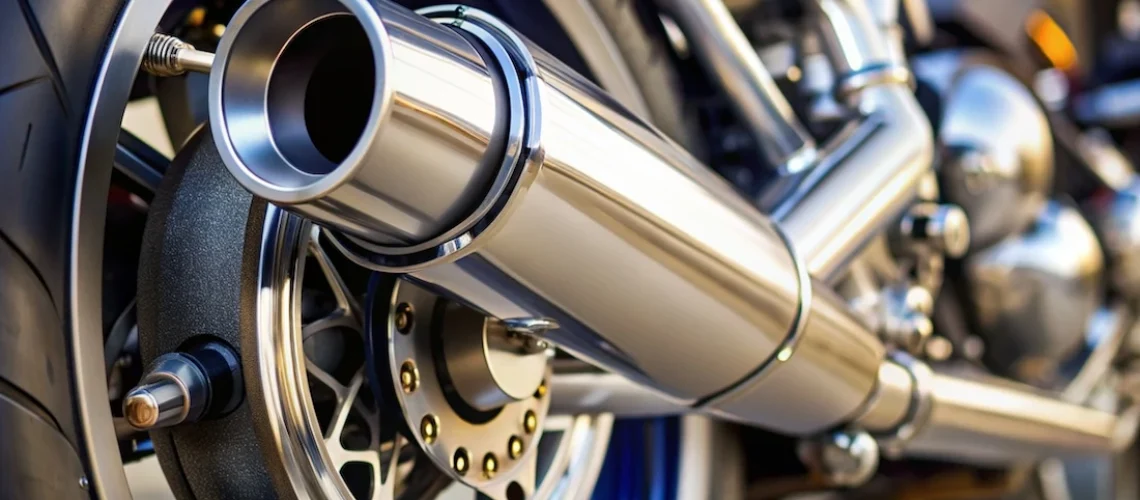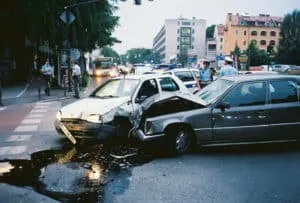Motorcycles can evoke a range of emotions, from the thrill of freedom to the anxiety of safety risks. One particularly polarizing topic in the motorcycle community is the use of loud exhaust pipes, which some believe enhances visibility but others argue creates unnecessary distractions. Understanding the implications of loud motorcycle noise is essential, particularly in areas like Fresno, where motorcycle crashes are a pressing concern.
In recent years, the debate surrounding loud pipes has intensified, with advocates claiming they improve safety by making riders more noticeable to other drivers. Conversely, critics warn that excessive noise can overwhelm drivers, leading to distractions and potentially dangerous road interactions. Statistically, motorcycle crashes continue to be a significant issue in California, raising questions about how noise contributes to overall safety.
As local noise ordinances evolve and awareness of rider responsibilities grows, it’s crucial to examine the dual nature of motorcycle exhaust noise. This article delves into the benefits and risks associated with loud pipes, the impact of noise on driver awareness, and the legal implications of motorcycle crashes in Fresno. Join us as we navigate this complex topic and explore the intersection of safety and liability on the road.
The Dual Nature of Motorcycle Exhaust Noise
The debate surrounding the volume of motorcycle pipes has remained a contentious issue, particularly in busy areas like Fresno. On one side, many motorcyclists argue that loud pipes are a crucial safety measure. They claim that the conspicuous sound of a roaring motorcycle alerts other drivers of their presence, potentially preventing motorcycle accidents. On the other side, critics point out the liability of excessive noise. They focus on noise restrictions and safety concerns associated with loud motorcycle tailpipes that can lead to negative consequences both legally and on the road. This nuanced issue calls for a balanced understanding of both the protection loud pipes might offer and the potential hazards they create.
Benefits of Loud Pipes for Visibility
The primary safety advantage of louder exhaust systems on motorcycles is enhanced visibility—or more accurately, audibility in traffic. Supporters of loud pipes argue that they help mitigate one of the biggest safety concerns for motorcyclists: being unnoticed by other motorists. This is particularly critical when considering the common instances where motorcycles are in the driver side window blind spot of a vehicle, or when an alcohol-impaired or careless driver may not be paying full attention. The noise acts as an audible beacon, alerting others to the motorcyclist’s presence and thus decreasing the chance of injury.
Moreover, loud pipes may be even more beneficial in certain traffic situations, such as in a left lane on motorways or while lane splitting—a practice legal in California that allows motorcycles to ride between lanes of slow-moving or stopped traffic. This could potentially prevent the kind of motorcycle accidents that often lead to profound medical expenses and the need for a personal injury attorney.
Risks Associated with Excessive Noise
Despite these purported safety benefits, risks associated with loud motorcycle exhausts are significant. Noise restrictions pose a real concern for riders who could find themselves in violation of local ordinances, leading to fines and altercations with law enforcement. Fresno, like many other cities, has safety restrictions that limit the decibel level of motorcycle exhaust systems to prevent noise pollution.
Excessive noise from loud exhaust systems can also be a cause of distress and irritation, resulting in angry people and an environment of hostility towards motorcyclists. There’s also the argument that very loud pipes could distract other drivers or even impede their ability to hear emergency vehicle sirens, possibly increasing the likelihood of an accident.
Additionally, insurance companies may not view the modification favorably, and in the case of an accident, the comparative fault rule could come into play. If a motorcyclist with deliberately loud pipes is found partly responsible for a crash, their loud exhaust could be cited as a contributing factor, potentially increasing their percent at fault.
In conclusion, while loud pipes can serve as an active safety feature alerting others to a motorcycle’s presence, they can also become a liability, especially if they contribute to noise pollution, distract other drivers, or impact fault assessment in personal injury lawsuits. When considering altering a motorcycle’s exhaust note in Fresno, motorcyclists must weigh the desire for increased safety with the need to adhere to local laws and the potential for increased liability in the event of a crash.
Motorcycle Noise and Safety
In Fresno, as in many cities across the United States, motorcycle safety is an ongoing concern, with the discussion about loud motorcycle tail pipes often at the forefront. These aftermarket modifications are intended to increase the volume of a bike’s exhaust note, which in theory, could alert other drivers to the motorcycle’s presence. The idea is that the louder the exhaust, the less chance of injury due to a collision, as the motorcycle becomes more noticeable amidst traffic.
However, safety restrictions and noise restrictions sometimes clash in this context. Safety concerns extend beyond the immediate vicinity of the loud motorcycle; excessive noise has the potential to drown out other important sounds in the environment, such as another vehicle’s horn, a pedestrian in distress, or the sirens of emergency services. It’s essential to consider the balance between being heard and being a disturbance or even a hazard. Should such noise be seen as a proactive safety measure or a reactive scramble after an accident, and how do insurance companies view these modified motorcycles? These are all factors that contribute to the complex debate surrounding motorcycle noise and safety.
The Impact on Driver Awareness
The argument that loud pipes save lives leans heavily on the assumption that increased motorcycle noise positively impacts driver awareness. It suggests that the piercing sound of a loud exhaust commands the attention of other drivers, particularly when a motorcyclist is in a driver’s blind spot or approaching an intersection. The idea is that the sound serves as an additional cue to motorists that a motorcycle is nearby, potentially reducing the chance of accidents caused by careless drivers who fail to notice the bike.
Nevertheless, there is also the risk that loud pipes could startle drivers, leading to sudden and unpredictable driver behavior. For instance, an unexpected loud noise could cause a knee-jerk reaction, resulting in drivers swerving unintentionally or braking abruptly, which in itself can precipitate accidents. Noise restrictions aim to mitigate such risks, ensuring a balance between alerting presence and maintaining a peaceful and safe road environment for all.
Statistics on Motorcycle Crashes
Motorcycle accidents have a notoriously high chance of leading to serious or fatal injuries, mainly due to the exposed nature of the rider. When examining the statistics surrounding motorcycle crashes, several factors figure prominently, such as the prevalence of alcohol-impaired drivers, lane-splitting practices, and driver inattention. According to reports from safety bodies and law enforcement agencies, a significant percentage of motorcycle accidents involve another vehicle, with the majority occurring when cars and trucks fail to yield right of way to motorcycles.
However, concrete data connecting loud motorcycle tailpipes to a reduced number of crashes is limited and often anecdotal. While there is some evidence suggesting that louder motorcycles are less likely to be involved in certain types of collisions, there is no definitive study proving that loud pipes alone are an effective safety device. Insurance companies and personal injury attorneys, such as Maison Law, are well-acquainted with the various factors at play in motorcycle accidents, including the role of noise in driver awareness and the subsequent assignment of fault under California’s comparative fault rule.
In terms of monetary costs, these statistics also translate into the reality of medical expenses for injured riders and potential personal injury lawsuits, as a simple incident can have life-altering ramifications. Understanding these statistics is crucial for anyone involved in the wider discussion of motorcycle safety, legal liability, and public health policy.
The Impact on Driver Awareness
The debate around loud motorcycle tailpipes often centers on their impact on driver awareness. Proponents argue that the increased noise levels can alert other motorists, potentially leading to fewer motorcycle accidents. The sound of a loud exhaust can serve as an auditory signal that a motorcycle is nearby, which is particularly crucial given that motorcycles have a smaller visual profile compared to cars.
Conversely, there are safety concerns regarding the potential for loud pipes to cause distraction or irritation among other drivers. Noise restrictions in various regions are implemented to balance these considerations.
Studies indicate that while louder exhaust may increase awareness in some cases, they are not a guaranteed safety measure. Driver behavior, such as the use of the driver side window, distractions, or being an alcohol-impaired driver, can significantly impact the effectiveness of loud pipes as a safety tool. Moreover, loud exhaust systems do not address visual detectability issues, especially in a driver’s blind spot or during lane splitting, which is a legal maneuver in some states.
In sum, while loud pipes may contribute to driver awareness, they are not a comprehensive safety solution and must be considered in the greater context of overall road safety and driver behavior.
Statistics on Motorcycle Crashes
Motorcycle accidents are a significant concern, with their potential to result in serious injuries or fatalities. National data indicate that motorcyclists are considerably more vulnerable on the road compared to passenger car occupants.
- Injuries and Fatalities: Riders face higher chances of sustaining head injuries, which are common in motorcycle crashes, regardless of whether a helmet is worn. Fatal injuries can occur, particularly when accidents involve an alcohol-impaired or careless driver.
- Contributing Factors: Driver behavior, including failure to see motorcyclists in the left lane or during lane splitting, are key factors in accidents. Loud pipes may alert a driver who is not paying attention, but they can also contribute to noise violations.
- Financial Impact: Victims often face substantial medical expenses. Insurance companies may cover some costs, but personal injury attorneys, such as those at Maison Law, are frequently consulted for pursuing additional compensation through a personal injury lawsuit.
- Liability Considerations: Liability in crashes may involve determining the percentage of fault. Under the comparative fault rule, a party can recover damages even if partially at fault, but the recovery is reduced by their percent at fault.
Motorcycle accidents present unique safety concerns and legal complexities, from understanding safety restrictions to navigating insurance claims and personal injury suits.
California Noise Ordinances
In California, the issue of loud motorcycle exhaust systems is addressed through both state-level noise regulations and local noise ordinances. The California Vehicle Code Section 27200-27207 is particularly relevant to motorcycles, dictating that exhaust systems shouldn’t produce noise levels exceeding 80 decibels when measured from a certain distance. It’s known amongst riders that non-compliant exhaust systems can lead to citations and fines. Additionally, aftermarket modifications that increase noise output beyond state-approved levels are prohibited, reinforcing the state’s stance on curbing excessive motorcycle noise.
This commitment to managing noise pollution is reflected in the state’s broader environmental and public health policies. The Office of Environmental Health Hazard Assessment recognizes noise as a possible public and environmental health concern, leading to stringent enforcement of noise-related laws.
Overview of Local Noise Restrictions
In many localities within California, such as Fresno, local noise ordinances complement state regulations on loud pipes. These municipal guidelines stipulate acceptable noise levels and times during which certain noise levels must be reduced, often known as “quiet hours.” These ordinances serve to protect residents from the disturbances caused by loud pipes which can be particularly problematic in residential areas. For instance, Fresno City has a specific noise ordinance that sets permissible sound levels in residential zones at different times of the day, usually lower during nighttime hours to minimize sleep disturbances.
Often, local law enforcement agencies are responsible for enforcing these ordinances, where police officers may use decibel meters to verify if the noise level exceeds the lawful limit. Riders within Fresno and other cities are advised to acquaint themselves with these local regulations to avoid infringements and maintain neighborhood serenity.
Comparison with Other States
Comparatively, when we look at noise restrictions for motorcycles across the United States, there’s a noticeable variation. States like New York and Florida also enforce noise control laws but with different thresholds and testing specifics. For example, Florida Statute 316.293 emphasizes the control of noise and vibration from motor vehicles, but like California, it places a cap on sound levels depending on the type of vehicle and speed. In New York, Article 10, Title III, Section 386 of the Vehicle and Traffic Law applies, which sets forth similarly strict noise limitations.
Here’s a simplified comparison:
State | Noise Level Cap for Motorcycles | Testing Conditions |
|---|---|---|
California | 80 decibels | Certain distance from the vehicle |
New York | Varies depending on factors | Based on specific speed and environment |
Florida | Varies depending on speed | At 35 mph or less and over 35 mph |
Each state has unique enforcement mechanisms and allowances for assessing decibel levels. Moreover, even within these states, local jurisdictions are empowered to enact and implement stricter noise standards, evidencing the importance of local ordinances in supplementing state laws.
Recent Changes to Noise Violation Enforcement
In response to safety concerns and community complaints, Fresno along with other cities in California, has seen a shift in enforcement regarding noise violations. As motorcycle accidents and noise complaints increased, law enforcement began to crack down on loud motorcycle tailpipes that exceed the state’s noise limit. This is in part based on the California Vehicle Code, which sets a maximum allowable motorcycle sound level. The enforcement of these noise restrictions is aimed at reducing excessive noise, which can contribute to noise pollution and disturb residential areas.
Additionally, spot checks and noise enforcement operations have become more frequent. Motorcycles found to have modified or damaged exhaust systems that cause them to emit noise above the legal limit may be subject to fines and be required to pass an inspection after repairs. State authorities have acknowledged that while loud pipes are sometimes considered a safety measure by riders who believe they make motorists more aware of their presence, the resultant noise can be a liability, creating disturbance and potential hearing damage within communities.
New Regulations Affecting Riders
The enforcement of noise restrictions has led to new regulations affecting riders in Fresno. For example, requirements for motorcycle mufflers have been clarified, stating that all motorcycles must have a muffler in good working condition to be legally operated on public roads. To be compliant, these mufflers must not only be present but must meet specific standards that limit sound emissions.
Furthermore, the California Highway Patrol (CHP) has initiated educational campaigns to inform riders about these noise limits and the repercussions of violating them. Law enforcement agencies are also using decibel meters to measure sound levels during traffic stops, which provides objective data to support noise violation citations. The consequence of non-compliance with these regulations can range from citations to mandatory court appearances and potentially, the risk of impoundment for motorcycles with illegal exhaust systems.
Implications of Enforcement Changes
The tightened enforcement of noise violations carries several implications for motorcycle riders in Fresno. Riders may need to be more vigilant in ensuring their motorcycles comply with the latest regulations to avoid penalties. Additionally, insurance companies may take note of noise violations, which could potentially affect insurance premiums or coverage conditions.
For riders involved in a motorcycle accident, whether a noise violation may impact liability and claims is a pertinent question. Personal injury attorneys such as Maison Law are an essential resource for riders navigating the legal implications of an accident which may be compounded by a noise violation. If a rider is found to be partly at fault due to a noise violation, this could influence the percentage of fault attributed to them – affecting their chance of a successful personal injury lawsuit and the amount of compensation for medical expenses and other damages.
Ultimately, riders in Fresno and in California at large must balance the desire for personal expression through their motorcycles with the community’s need for peace and quiet. The trend towards stricter noise enforcement presents a clear message: safety measures on the road should not translate into a public liability off of it.
New Regulations Affecting Riders
In Fresno and across California, new regulations continue to emerge, impacting motorcycle riders and aiming to enhance safety on the roads. Key among these regulations are noise restrictions that target loud motorcycle tailpipes, a subject of contention among riders. Some argue that loud exhausts serve as a safety measure, making motorists aware of a motorcycle’s presence, while others see it as a liability, contributing to noise pollution and potentially leading to crashes by startling other road users.
Safety concerns extend to practices like lane splitting, where riders navigate between lanes of slow-moving or stopped traffic. While this can reduce traffic congestion and is legal in California, it requires careful execution to avoid accidents. State law also dictates that motorcyclists should use a separate diamond lane, also known as a high-occupancy vehicle lane, to further reduce the chance of injury.
When accidents occur, determining liability is crucial. California follows the comparative fault rule, which means that each party involved in an accident can be assigned a percentage of fault. This affects recovery in personal injury lawsuits, with medical expenses and other damages often being contested by insurance companies. In cases of motorcycle crashes, common injuries include head injuries, which can be fatal or lead to significant medical bills and the need for a personal injury attorney such as Maison Law.
Implications of Enforcement Changes
Changes in the enforcement of noise and safety regulations for motorcycles in Fresno can have significant implications for riders and residents alike. Firstly, stricter enforcement of noise restrictions could result in penalties for motorcycles with loud exhaust systems. This might encourage riders to maintain lower noise levels, which could improve the relationship between motorcyclists and the communities they ride through.
On the safety side, increased oversight could mean a greater focus on ensuring motorcycles meet all safety restrictions. This could lead to fewer motorcycle accidents as well as a potential decrease in the severity of common injuries such as head injuries.
Additionally, insurance companies might adjust policies to reflect the new enforcement landscape. As a result, motorcyclists in compliance with noise and safety guidelines might benefit from lower insurance rates, whereas those in violation could face higher costs.
Moreover, with changes in enforcement, riders might engage personal injury attorneys, such as Maison Law, for guidance on how to navigate legal situations arising from accidents, which may include determining the percentage of fault under the comparative fault rule or handling medical expenses.
Overall, enforcement changes could influence rider behavior, reducing incidents involving motorcycles and their interaction with both residents and drivers in Fresno.
Distractions on the Road
In the dynamic landscape of Fresno’s roads, distractions for drivers are a significant concern, leading to potential safety hazards for all road users, including motorcyclists. Various stimuli can divert a driver’s attention away from the driving task, which might only require a momentary lapse to precipitate an accident. These distractions are multifaceted, ranging from technological devices to external events, and even the driver’s own wandering thoughts. The complexity and variety of distractions underscore the need for both drivers and riders to remain vigilant and to prioritize attention while on the road.
Common Distractions for Drivers
Distractions impacting drivers may come from various sources, and identifying them is the first step towards mitigation. The following table outlines some of the most common distractions encountered by drivers:
Distraction Type | Examples | Potential Consequences |
|---|---|---|
Visual | Texting; Looking at GPS | Missed traffic signals |
Manual | Eating; Adjusting climate controls | Slower reaction time |
Cognitive | Daydreaming; Stressful thoughts | Impaired decision-making |
Auditory | Loud music; Conversations in the car | Overlooked auditory cues |
Combined (Multi-tasking) | Using a smartphone; Handling pets | General distraction |
Each category presents its own challenges and risks. For instance, a driver looking at their phone may not notice a motorcyclist’s turn signal, leading to an escalated chance of injury. Engaging with technology or passengers can lead to missed road signs and a heightened risk of colliding with a motorcyclist occupying the left lane or lawfully lane splitting.
The Role of Rider Behavior
While much is said about driver distractions, rider behavior is an equally critical factor in road safety. A motorcyclist’s actions can either reduce or compound the risks brought about by distracted drivers. Motorcyclists making the choice to utilize loud motorcycle tail pipes often argue that the increased noise serves to announce their presence to distracted drivers, potentially alerting them through auditory channels that might otherwise be neglected if the driver side window is closed or if music is playing loudly.
Yet, there are those who assert that loud pipes are a liability in themselves, pointing out that excessive noise can be a distraction and can also lead to angry reactions from both drivers and residents, potentially escalating conflict on the road. In addition, careless riding behaviors such as weaving aggressively through traffic, speeding, or passing unsafely can negate any supposed safety benefits of louder exhausts.
Furthermore, when a collision occurs involving a motorcycle, rider behavior will be scrutinized under the comparative fault rule, which will determine the percentage of fault each party has in the incident. If a motorcyclist’s actions are deemed reckless or unnecessarily dangerous, they may bear a significant portion of the responsibility in a personal injury lawsuit. It is recommended that riders mitigate risk through responsible riding and adherence to safety restrictions, thus reducing the chance of fatal injuries and potential legal liabilities with insurance companies or personal injury attorneys such as Maison Law.
Common Distractions for Drivers
Driving requires full attention, but various distractions can compromise a driver’s focus. Key distractions include:
- Mobile devices: Texting, calling, or using smartphone apps.
- Passengers: Interacting with passengers, especially those who are disruptive.
- Eating and drinking: Consuming food or beverages.
- Adjusting controls: Changing the radio, climate settings, or navigation.
- Outside events: Trying to look at accidents, billboards, or scenery.
- Personal grooming: Applying makeup or shaving.
- Daydreaming: Getting lost in thought instead of concentrating on the road.
Each of these distractions has the potential to divert a driver’s attention away from the task of driving, increasing the chance of an accident. It’s crucial to maintain focus and minimize any activities that could steer your attention from the road.
The Role of Rider Behavior
Rider behavior plays a crucial role in motorcycle safety and the outcome of possible accidents. Careless drivers of both motorcycles and other vehicles contribute significantly to the incidence of crashes. Motorcycle riders are often tempted to engage in lane splitting — moving between lanes of slow-moving or stopped traffic — which is legal in some states under specific circumstances. This maneuver, while sometimes safe, can be risky depending on driver behavior and awareness.
Another common risky behavior is riding in the left lane on motorways consistently, which can lead to frustration for other drivers trying to pass. Some motorcyclists also engage in using a separate diamond lane, which is meant for high-occupancy vehicles, thus, violating traffic rules and increasing the chance of injury.
On the flip side, riders can take positive steps to decrease the likelihood of accidents. This includes avoiding alcohol before riding, always wearing a helmet to prevent head injuries, and staying aware of the presence and actions of other vehicles. Proper rider behavior can significantly reduce the chance of fatal injuries and the need for a personal injury attorney to recover medical expenses after an accident.
Responsibility During Road Interactions
Motorcycle accidents often have complex causes, involving a nexus of factors such as road conditions, rider and driver behavior, vehicle maintenance, and even the laws governing road use. In the bustling streets of Fresno, where the sound of loud motorcycle tailpipes can echo throughout the city, determining the role these exhaust systems play in safety or liability becomes a nuanced discussion. The debate centers on whether these loud pipes act as a cautionary signal to other road users or create unnecessary noise leading to distraction and irritation.
A central aspect of road interaction responsibility is anticipation and awareness. Both riders and drivers must be mindful of their surroundings, ensuring that their actions do not endanger others. Despite the common belief among some riders that loud pipes enhance safety by alerting other drivers to their presence, this is not a unanimously accepted safety measure. Noise restrictions are in place to maintain a peaceful environment, and excessive noise can lead to safety restrictions that further define how motorcycles are ridden and equipped.
Insurance companies and personal injury law firms such as Maison Law have seen the consequences of motorcycle crashes firsthand. They understand that the aftermath involves more than just dealing with medical expenses; it’s about the profound impact on the lives affected. One key element in crash analysis is the determination of who is percent at fault, using the comparative fault rule to ascertain liability. This legal concept plays a significant role in personal injury lawsuits, as understanding the percentage of fault assigned to each party is crucial for fair compensation.
For Fresno riders and drivers, it becomes imperative to approach each interaction with other road users with care and diligence. Whether a loud exhaust is considered a safety feature or a liability, the onus lies on all parties to engage in responsible behavior that minimizes the risk of common injuries or, in the worst case, fatal injuries.
Best Practices for Riders
Motorcycle riders in Fresno can maximize their safety and lessen their chances of being involved in motorcycle accidents by following these best practices:
- Enhance Visibility:
- Avoid riding in blind spots.
- Wear reflective or high-visibility gear.
- Use turn signals for every lane change or turn.
- Communication and Alertness:
- Commit to hand signals in addition to electronic ones.
- Remain extra vigilant at intersections and driver side windows to anticipate turning vehicles.
- Defensive Riding:
- Always assume you are not seen by a driver.
- Keep a safe distance from other vehicles to allow for reaction time.
- Ride Sober:
- Never operate a motorcycle while under the influence of alcohol or drugs.
- Helmet Use:
- Always wear a DOT-approved helmet to greatly reduce the risk of head injuries.
- Proper Licensing and Education:
- Ensure you possess a valid motorcycle license and partake in ongoing rider education.
- Adherence to Traffic Laws:
- Obey speed limits.
- Do not engage in lane splitting unless it’s legal and safe to do so.
- Respect traffic signals and signs.
By practicing these safety measures, riders contribute to a safer road environment, which potentially reduces the need to consult a personal injury attorney for a personal injury lawsuit.
Best Practices for Drivers
For drivers sharing the road with motorcycles in Fresno, being cognizant of the particular vulnerabilities that riders face is paramount. Adhering to these best practices can help prevent accidents:
- Maintain a Safe Following Distance:
- Allow more following space when behind a motorcycle—three to four seconds is recommended.
- Check Blind Spots:
- Double-check mirrors and blind spots for motorcycles before changing lanes or merging, especially at higher speeds.
- Avoid Distractions:
- Refrain from using mobile devices or engaging in activities that take your attention away from driving.
- Signal Intentions Early:
- Use turn signals well in advance to alert motorcyclists of your intended maneuvers.
- Be Mindful of Motorcycle Movements:
- Understand that motorcycles may need to make sudden moves to avoid hazards like potholes, wet pavement, or debris.
- Never Drive Impaired:
- Driving under the influence of alcohol or drugs is illegal and increases the risk of causing an accident with severe or fatal injuries.
- Educate Yourself:
- Familiarize yourself with the challenges motorcyclists face, such as effects of wind blast, stopping distances, and maneuverability issues.
By drivers following these guidelines, the chances of causing a motorcycle accident can be greatly reduced, and thus the overall safety for all road users is increased.
Best Practices for Riders
When it comes to motorcycle safety in Fresno and beyond, riders must balance their need for protection with adherence to local laws. Here are best practices for riders that can safeguard them from common motorcycle accidents and mitigate the chance of injury:
- Wear Protective Gear: Always wear a helmet to prevent head injuries. Include a jacket, gloves, and proper pants to guard against cuts and abrasions.
- Stay Visible: Use reflective gear, especially at night. Keep headlights on and consider wearing bright clothing.
- Lane Positioning: Ride in the part of a lane that makes you most visible to drivers. Avoid the driver’s blind spot.
- Observe Traffic Laws: Follow speed limits, noise restrictions, and all safety regulations. Lane splitting should be executed with extreme caution.
- Rider Training: New riders should take safety courses, and experienced riders should consider refresher courses.
- Avoid Impairments: Never ride under the influence of alcohol or drugs.
- Maintenance: Keep your motorcycle in good working condition, including quiet exhaust systems that comply with noise restrictions.
In the unfortunate event of an accident, riders should consult with a personal injury attorney, such as Maison Law, to navigate complex issues like medical expenses and insurance claims. Remember, the law follows the comparative fault rule in Fresno, where the percentage of fault affects the outcome of a personal injury lawsuit.
Best Practices for Drivers
Best practices for drivers are crucial to ensure safety on the roads and reduce the chance of involvement in motorcycle accidents or any vehicular incident. Here are some key practices:
- Stay Alert: Keep your focus on the road and avoid distractions such as using your phone or fiddling with the radio.
- Obey Traffic Rules: Follow speed limits, traffic signals, and road signs. Adhere to lane discipline and use turn signals appropriately.
- Be Mindful of Motorcyclists: Since motorcycles are smaller than cars, they can be harder to spot. Always check mirrors and blind spots, especially before changing lanes.
- Avoid Impairment: Never drive under the influence of alcohol or drugs. An alcohol-impaired driver significantly increases the risk of causing accidents.
- Don’t Tailgate: Maintain a safe distance from the vehicle ahead to allow sufficient time to react in case of sudden stops.
- Use Headlights: Turn on your vehicle’s headlights at dusk or in poor weather conditions to improve visibility.
Following these practices not only safeguards you and other road users but also helps avoid the repercussions that come with accidents, such as dealing with insurance companies, facing legal action, and managing medical expenses.
Liability in Motorcycle Crashes
When assessing liability in motorcycle crashes, several factors are taken into account, ranging from driver behavior to environmental conditions. In Fresno, where motorcycles are a common sight, understanding these factors is crucial to determine who is legally responsible for the crash. Liability is typically centered around negligence, which is the failure to exercise a level of care that a reasonably prudent person would in similar circumstances.
Careless drivers who do not adhere to safety restrictions, like those who engage in lane splitting or do not respect a motorcycle’s right to occupy a lane on motorways, can be considered negligent. An alcohol-impaired driver, for example, would likely be found negligent due to the increased risk they pose to others. At times, the motorcyclist may be at fault, particularly if they were not obeying noise restrictions with loud motorcycle tailpipes, acting as a distraction and potentially leading to liability issues.
In certain circumstances, the liability could extend beyond the drivers involved. For instance, a landlord may be found liable for an accident occurring on rental property if the conditions posed safety concerns. Similarly, a property owner could bear responsibility if their negligence in maintaining the property contributed to the accident.
Fresno operates under the comparative fault rule, meaning that each party involved in an accident can be held liable for their percentage of fault. This rule allows for a fair assessment of incidents, but also reflects the complexity of determining liability when multiple parties may share the blame to varying degrees.
Excessive Noise as a Liability Factor
The debate surrounding loud motorcycle exhaust systems pivots between safety measure and public nuisance. Some riders assert that “loud pipes save lives,” suggesting that the increased noise makes them more noticeable to other drivers, particularly those who are inside vehicles with closed windows. This might be considered a safety measure aimed to reduce the chance of injury or fatal injuries, as it can alert otherwise distracted or careless drivers to the presence of a motorcycle nearby.
However, excessive noise can also become a liability factor in motorcycle accidents. Noise restrictions exist for a reason; excessively loud pipes can be distracting or even startling to other drivers, potentially leading to dangerous situations such as sudden lane changes or braking. In Fresno, if a motorcycle’s loud tailpipes are deemed to exceed noise restrictions, this could potentially be used against a motorcyclist in a personal injury lawsuit, arguing that the noise contributed to the circumstances leading to the crash.
The impact of noise in contributing to a motorcycle accident would largely depend on evidence showing that the loud exhaust had a direct role in causing the accident – for instance, if it caused another driver to act rashly or obscured the sound of a horn or other warning signal. An insurance company or personal injury attorney may use the argument of excessive noise to shift the degree of fault in an accident.
Proving Fault in Accidents
Proving fault in motorcycle accidents is a complex process that involves compiling evidence, expert testimony, and understanding the nuances of traffic laws. In Fresno, as in other jurisdictions, evidence can range from eyewitness accounts and police reports to surveillance footage and damage to the vehicles involved. Maison Law, a firm representing personal injury claims, would seek to gather all pertinent evidence to build a robust case for their client.
The injuries sustained by the parties involved can also tell a story; common injuries in motorcycle accidents include head injuries, which could be exacerbated by the absence of a helmet. Evaluating the nature of these injuries often requires medical expertise and can influence an insurance company’s assessment of claims and medical expenses.
Key to proving fault is the concept of negligence, which necessitates showing that another party acted without the care and attention expected of a reasonably prudent person. In cases of comparative fault, the percentage of fault must be established to determine each party’s liability. The biggest mistakes people make when involved in accidents are failing to collect evidence and admitting fault at the scene; both can impact the outcome of a personal injury lawsuit.
Other factors, such as an obstructed driver side window, the actions of an alcohol-impaired driver, or the legality of lane splitting, could all contribute to determining who is at fault. For motorcyclists, simple mistakes like not wearing protective gear or riding in a separate diamond lane can diminish the chance of proving the other party’s sole fault.
Evidence and legal arguments need to align closely with safety regulations and traffic laws to successfully assign responsibility. And while the process is complex, having the support of an experienced personal injury attorney can greatly help in navigating the intricacies of motorcycle accident claims.
Excessive Noise as a Liability Factor
Excessive Noise as a Liability Factor
In the debate over motorcycle safety, the roar of loud pipes often takes center stage. Riders insist that a loud exhaust announces their presence on the road, potentially averting accidents by alerting careless drivers. However, excessive noise can become a liability, especially when it leads to motorcycle accidents in cities like Fresno.
Firstly, noise restrictions in Fresno regulate excessive vehicle sounds, which can include loud motorcycle tailpipes. Defying these can lead to fines and penalties, highlighting the importance of following community safety concerns. Furthermore, in the turbulent aftermath of a crash, the noise level of a motorcycle could play a role in determining the percentage of fault. Under the comparative fault rule, if the loud pipes are deemed a contributing factor to distraction or confusion on the road, the rider’s chance of injury might increase alongside their liability in a personal injury lawsuit.
The insurance company may also consider loud exhausts when assessing a claim. If an accident results in head injuries or other common or fatal injuries, the motorcyclist’s decision to use loud pipes could be scrutinized and potentially reduce the compensation for medical expenses. Therefore, riders should balance the desire for loud pipes with the legal and safety restrictions to minimize personal and financial risks.
Proving Fault in Accidents
When proving fault in accidents, particularly regarding motorcycle accidents, key factors are taken into account. The percentage of fault is established through a comparative fault rule, which determines each party’s level of responsibility.
Proof of fault can include traffic violations or careless driver behavior, such as driving under the influence of alcohol or performing dangerous maneuvers like lane splitting. Additionally, evidence from the scene, witness statements, and police reports play significant roles. In some cases, factors such as road conditions or defects in the vehicle itself might also contribute to the accident.
Insurance companies thoroughly investigate these incidents to ascertain fault. They may look at whether the motorcycle had loud motorcycle tailpipes and if that contributed to the accident.
Here is a quick checklist for proving fault:
- Establish the driver behavior at the time of the accident (e.g., distracted driving, speeding).
- Demonstrate any traffic law violations.
- Gather evidence from the accident scene.
- Collect witness testimonies.
- Review police and accident reports.
- Investigate for the influence of alcohol or drugs.
- Consider roadway and environmental conditions.
- Examine vehicle conditions and maintenance history.
In the aftermath, those involved may seek a personal injury attorney to recover medical expenses or for a personal injury lawsuit. The attorney will assist in accurately determining fault to help their client obtain fair compensation.
For More Info
If you’ve been involved in a motorcycle accident in Fresno and are grappling with safety concerns, potential medical expenses, or looking to understand your rights, Phoong Law is here to assist you. With an experienced team of personal injury attorneys, they understand the severity that motorcycle accidents can carry—from head injuries to fatal injuries—and are ready to guide you through the complexities of your personal injury lawsuit.
Contact Information: Phoong Law Phone: 866-GOT-PAIN Available: 24/7 for Consultation
Should you find yourself or a loved one injured due to motorcycle accidents, whether they involve loud motorcycle tail pipes, driver behavior, or careless drivers, know that Phoong Law is equipped to deal with an array of incidents, including but not limited to:
- Lane splitting accidents
- Collisions due to alcohol-impaired drivers
- Comparative fault rule cases
Understanding the percentage of fault and how it may impact your claim is crucial. Phoong Law’s professionals are adept at navigating these issues and ensuring that your rights are preserved, while also pursuing the rightful compensation for your losses. Reach out to them at any time for more information or legal advice regarding your motorcycle accident case.
Disclaimer: The information provided in this blog post is for general informational purposes only and should not be construed as legal advice. Every case is unique, and the laws related to motorcycle accidents and liability can vary. If you have specific legal concerns or are involved in a motorcycle accident, it is essential to consult with a qualified attorney for personalized legal advice. Phoong Law assumes no responsibility for any errors or omissions in the content of this post or for any actions taken based on the information provided.
























